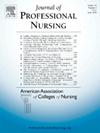超越讨论板:异步在线主动学习的范围审查
IF 2.9
3区 医学
Q1 NURSING
引用次数: 0
摘要
异步在线学习在护理教育中越来越受欢迎。主动学习促进学生的参与和批判性思维。虽然讨论板很常见,但它们往往缺乏有意义的互动。目的:本综述旨在识别异步主动学习活动、其学习成果和评估方法。方法通过CINAHL、MEDLINE、Web of Science和谷歌Scholar检索2016 - 2023年间发表的同行评议的英文文章。选择纳入的文章(n = 19)描述了用于教授各种学习成果的活动,包括基于游戏的学习、交互式案例研究、视频/语音讨论、交互式视频和虚拟模拟。评估方法多种多样,包括调查、课程成绩和项目成果。有许多有效的策略可以促进学生参与异步主动学习。利用这些策略可以使护理教师在他们的课程中实施主动学习。教育工作者应该努力通过采用异步主动学习方法来优化学生满意度和学习成绩。本文章由计算机程序翻译,如有差异,请以英文原文为准。
Beyond the discussion board: A scoping review of asynchronous online active learning
Background
Asynchronous online learning is increasing in popularity in nursing education. Active learning promotes student engagement and critical thinking. While discussion boards are common, they often lack meaningful interaction.
Purpose
This scoping review aims to identify asynchronous active learning activities, their learning outcomes, and evaluation methods.
Method
Searches were conducted using CINAHL, MEDLINE, Web of Science, and Google Scholar for peer-reviewed English-language articles published between 2016 and 2023.
Results
Articles selected for inclusion (n = 19) described activities including game-based learning, interactive case studies, video/voice discussions, interactive videos, and virtual simulations used to teach a wide variety of learning outcomes. Evaluation methods varied, including surveys, course grades, and program outcomes.
Conclusions
There are numerous effective strategies for fostering student engagement in asynchronous active learning. Utilizing these strategies may empower nursing faculty to implement active learning in their courses. Educators should strive to optimize both student satisfaction and academic performance by embracing asynchronous active learning methodologies.
求助全文
通过发布文献求助,成功后即可免费获取论文全文。
去求助
来源期刊
CiteScore
4.80
自引率
8.00%
发文量
153
审稿时长
52 days
期刊介绍:
The Journal will accept articles that focus on baccalaureate and higher degree nursing education, educational research, policy related to education, and education and practice partnerships. Reports of original work, research, reviews, insightful descriptions, and policy papers focusing on baccalaureate and graduate nursing education will be published.

 求助内容:
求助内容: 应助结果提醒方式:
应助结果提醒方式:


